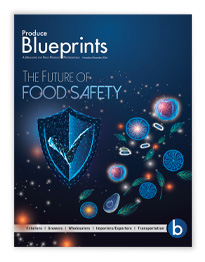
The Technomic/IFPA report concluded that most consumers initially didn’t seem to mind higher menu prices, additional fees, lower portion sizes, and limits on “free” items like napkins and condiments, as indicated by positive traffic trends starting in March 2021.
But this has changed in the last several months. Consumers are now cutting back on restaurant spending and traffic is dropping, especially at full-service restaurants and some limited-service eateries.
Datassential reports similar trends: when operators began passing along cost increases to consumers in the second half of 2022, it had little impact on traffic since food-at-home prices were increasing similarly.
At the end of 2023 and beginning of 2024, however, grocery prices leveled off while away-from-home prices remain elevated or continued to climb, causing consumers to reconsider going out and explore other options.
These trends are likely to lead to an increase in deal offers, as well as new products and limited-time offers to add excitement.
The National Restaurant Association’s State of the Industry report found about 70 percent of adults often look for a daily special or other discount when dining; 85 percent are more flexible about when they dine if they can get a deal; 84 percent would take advantage of deals at off-peak times; and 75 percent of adults say they would order smaller-sized portions at a lower price.
The above report also mentioned menus are changing more frequently, usually due to increased food prices, leading operators to remove menu items or make substitutions with lower-cost alternatives, adjust portion sizes, and look for new suppliers with better pricing.
More than three-quarters (77 percent) of restaurant operators said they experienced supply delays or shortages on certain items during 2023, which in turn affected menus and offerings. Unfortunately for them, 86 percent of adults say they prefer having many menu items and options to choose from.
Technomic says consumers looking for value are leaning in several directions: from opting for takeout rather than delivery to eating out for breakfast instead of lunch or dinner to reduce costs. Even when looking for a unique dinner experience, consumers still want to feel like they’re getting a good value for their meal.
Melodie Beal, head of culinary development for Amazon Fresh BB #:283186, agrees, noting this is just as valid for value-added sides and meals from grocery stores.
“Customers want to know that we’re thinking of them,” she says. “They want to feel like we’ve helped them set the table for their friends and family, without compromise. We have an opportunity to keep customer loyalty by being part of their everyday fresh shopping solution.”
This is an excerpt from the feature story of the July-August issue of Produce Blueprints Magazine. To read the whole issue, click here.
The Technomic/IFPA report concluded that most consumers initially didn’t seem to mind higher menu prices, additional fees, lower portion sizes, and limits on “free” items like napkins and condiments, as indicated by positive traffic trends starting in March 2021.
But this has changed in the last several months. Consumers are now cutting back on restaurant spending and traffic is dropping, especially at full-service restaurants and some limited-service eateries.
Datassential reports similar trends: when operators began passing along cost increases to consumers in the second half of 2022, it had little impact on traffic since food-at-home prices were increasing similarly.
At the end of 2023 and beginning of 2024, however, grocery prices leveled off while away-from-home prices remain elevated or continued to climb, causing consumers to reconsider going out and explore other options.
These trends are likely to lead to an increase in deal offers, as well as new products and limited-time offers to add excitement.
The National Restaurant Association’s State of the Industry report found about 70 percent of adults often look for a daily special or other discount when dining; 85 percent are more flexible about when they dine if they can get a deal; 84 percent would take advantage of deals at off-peak times; and 75 percent of adults say they would order smaller-sized portions at a lower price.
The above report also mentioned menus are changing more frequently, usually due to increased food prices, leading operators to remove menu items or make substitutions with lower-cost alternatives, adjust portion sizes, and look for new suppliers with better pricing.
More than three-quarters (77 percent) of restaurant operators said they experienced supply delays or shortages on certain items during 2023, which in turn affected menus and offerings. Unfortunately for them, 86 percent of adults say they prefer having many menu items and options to choose from.
Technomic says consumers looking for value are leaning in several directions: from opting for takeout rather than delivery to eating out for breakfast instead of lunch or dinner to reduce costs. Even when looking for a unique dinner experience, consumers still want to feel like they’re getting a good value for their meal.
Melodie Beal, head of culinary development for Amazon Fresh BB #:283186, agrees, noting this is just as valid for value-added sides and meals from grocery stores.
“Customers want to know that we’re thinking of them,” she says. “They want to feel like we’ve helped them set the table for their friends and family, without compromise. We have an opportunity to keep customer loyalty by being part of their everyday fresh shopping solution.”
This is an excerpt from the feature story of the July-August issue of Produce Blueprints Magazine. To read the whole issue, click here.



